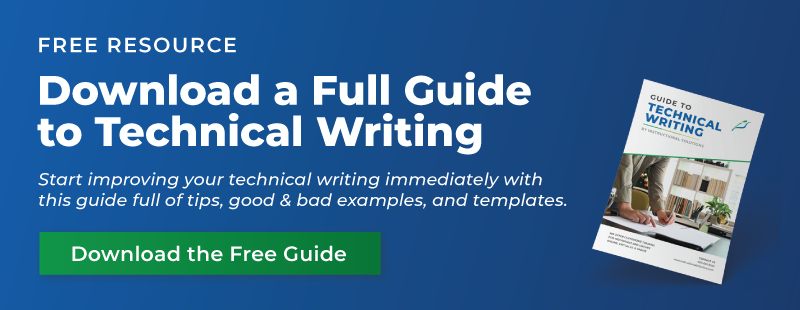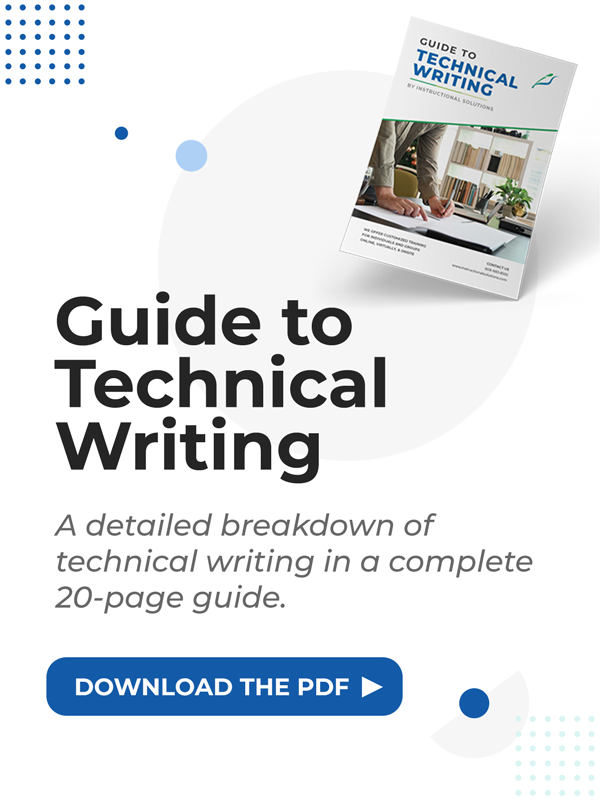Writing a business report can be a daunting task, no matter how comfortable you are as a writer. They are often longer, more formal, and more business-critical than most other documents or communications we write. Reports typically have many eyes on them and receive more scrutiny. All of this is because of the critical role that reports play in business: they aid in decision-making.
A definition
Business reports are always informational in nature. They present facts or data. Most reports also include recommendations. Those recommendations should be objective and based on careful analysis of the situation or data.
How you approach writing your business report will depend on your objectives; remember that there are many common types of business reports!
Examples
- feasibility report
- situational report
- investigative report
- compliance report
- recommendation report
- incident report
- yardstick report or scorecard
- periodic report
- informal reports
Tools for reports
More traditional business reports that require detailed background and explanations will typically be text-based Word documents. Data-driven reports with less text work well in Excel spreadsheets. And Powerpoint is a fantastic resource for high-level reporting and incorporating visuals.
Our complete Guide to Business Writing can be found here.
Report planning
Whichever format you decide on, a good report requires planning.
I repeat: you cannot write an effective report without a solid process and some pre-work before you jump into drafting.
This can take some habit retraining. Many of us write quick responses throughout the workday, so we’re used to the speed and instant gratification of writing and completing a document. Drafting always feels like the most productive stage.
When tackling an important business report, you must build some time upfront for the planning. Some reports will also require an initial data-analysis phase before you can even think about writing up findings or recommendations. When analyzing data for business reports, leveraging online resources can enhance accuracy and insights. Consider enrolling in interactive machine learning online courses to refine your data analysis techniques, which can improve your report writing by providing deeper understanding and predictive capabilities.
It’s important to note that this planning stage will not add time to your total process. Instead, following a systematic, strategic planning process will save you time in future writing and editing frustration. It also ensures a more effective report. This process is a key component of our Technical Report Writing Course.
Important initial steps
- Clarify and cement your primary and secondary objectives
- Understand the perspective of your target audience
- Create a logical structure to present your ideas and findings
There are many tools available to help you in this planning process. A linear written outline can be a simple yet effective guide as you structure your ideas before you begin writing. It forces you to clarify your main topics, the subtopics within them, and the order in which you present everything.
Plan with a mind map
Although outlines are fantastic, I recommend creating a mind map when writing a business report.
Reports are complex documents. A mind map provides the same structure as an outline but with additional flexibility and collaboration features. I even created a mind map to plan this article!
Structuring your business reports
When we plan and write, we usually follow the same order in which we would read a document. We start at the beginning. We are accustomed to following and recounting narrative, sequential timelines. “I started with this data, I analyzed it and found ABC, so this means that we must do XYZ.”
This approach does not work for business reports.
Why is this?
Reports should be structured with the highest-level summary, implications, and recommendations first. As your reader progresses, they find more and more detail and specificity.
General report structure
- An executive summary with all conclusions and recommendations
- Explanations and implications of data or information
- Presentation of data or information, sometimes methodology to document the research or review completed
- Relevant appendices, such as evaluations, raw data, various charts, etc.
Consider your busy executive readers
Remember that reports are often created for busy leaders or executive teams. Busy report readers must be able to read only the executive summary and understand all the key takeaways of your report. They could stop reading at any time.
You, as a writer, will start with the details and data, move to explanation and analysis, and end by creating conclusions. Your planning should follow that order, but your actual report should not.
One common mistake we often see in business reports is including a conclusion section at the end of the report that includes recommendations. Recommendations should appear in your executive summary, not a conclusion. Don’t force a busy executive to read an entire report to glean what is most important or have to search for important insights.
Related: The Top Business Communication Skill You Need to Succeed
Language matters in business reports
How often have you read a business report, even one from your own industry, and thought, “Who could understand this?” Business reports are infamous for inscrutable, frustrating language. Technical reports often include technical verbiage that non-technical readers don’t understand.
It doesn’t have to be this way! Although you need to write with professionalism and formality, the basis of your language should be easy, understandable vocabulary and straightforward sentence structures.
The subject matter of business reports is often very dense. Don’t add complexity by using overwrought, unwieldy sentences and unnecessarily fancy words.
Short sentences are powerful
Also, use industry vernacular when appropriate and necessary, but avoid jargon. This is a bad habit that many of us fall into because jargon is rampant in business writing. You want your words to mean something. You’ll probably need to incorporate some technical vocabulary but be very purposeful with your other wording.
A famous Einstein quote comes to mind: “If you can’t explain it simply, you don’t understand it well enough.”
We often advise our clients that they should always “Write to express, not to impress.”
Care with templates
If there are certain types of business reports you have to write frequently, such as project status reports, templates can be huge time savers. They provide a framework and language that you repeatedly use — a major efficiency driver.
That said, be very mindful about how you use templates.
Remember that your report content and key ideas should determine the appropriate organization, not the template.
Make sure you’re not defaulting to your habitual structure or wording. It’s easy to fall into habits and neglect the critical thinking that has to occur in the planning stage of every report.
Craft a powerful business report
I hope this article has given you some clarity around your question of how to write a business report. With thoughtful planning, the right tools, and meaningful language, you’re well on your way to crafting effective reports with more efficiency and skill.
If you need a deeper dive into how to write clear, concise, and professional business reports, enroll in our online, self-paced Report Writing Course. This course is also available for groups online, virtually, and onsite.






